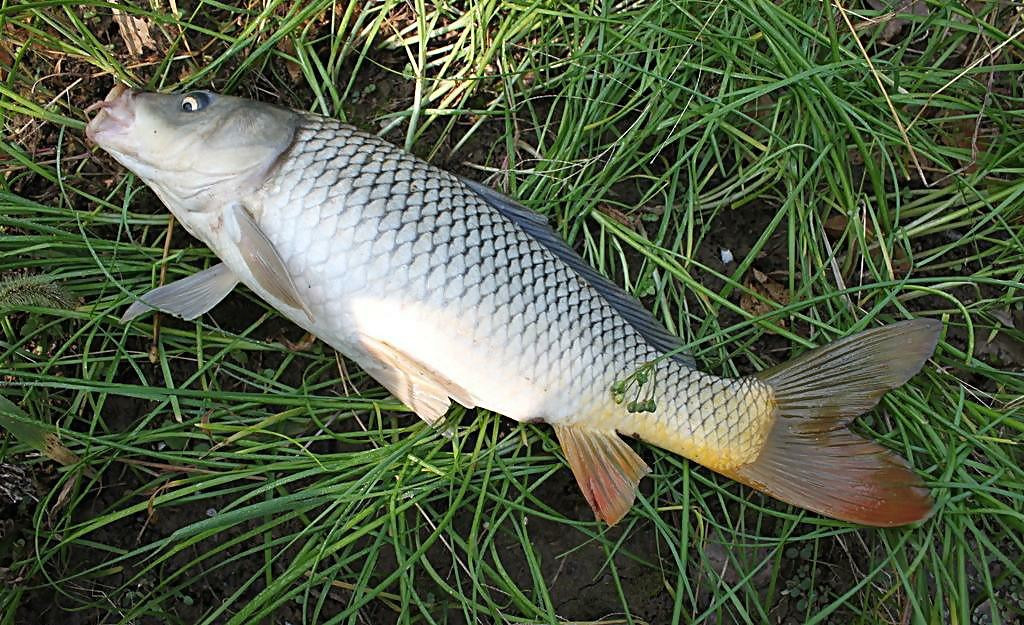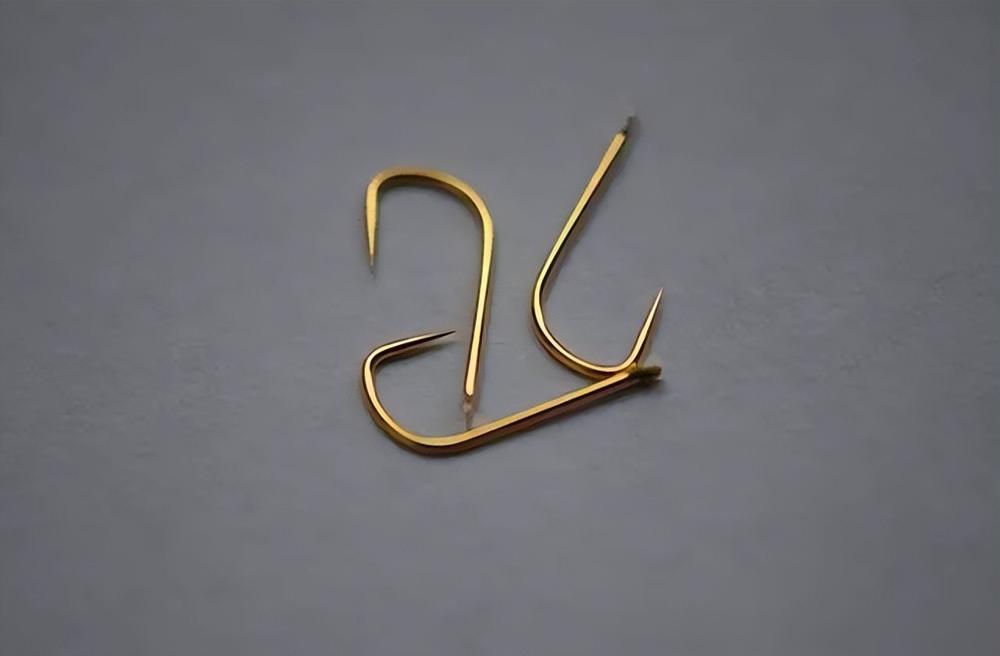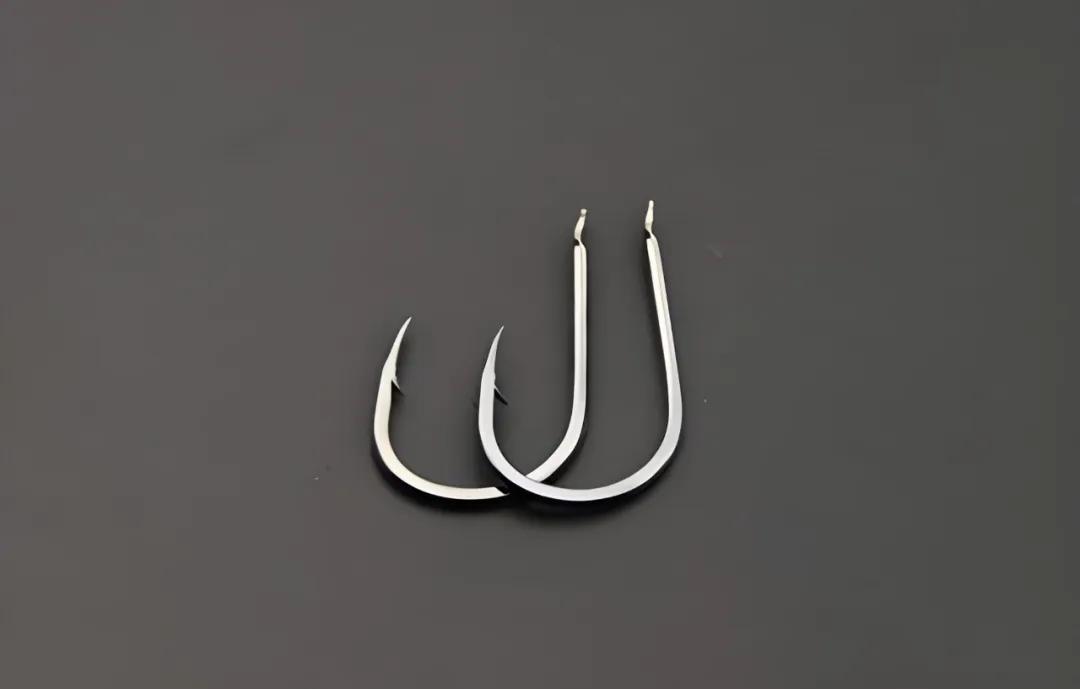I came across a very interesting question online and decided to write an article to share it with everyone. The question was: What fishing hook should be used for wild fishing to effectively catch both crucian carp and carp, making it versatile for all sizes?

Anglers with a few years of experience know that this question actually has no definitive answer. Leaving aside the thickness and shape of the hook wire, just the size of the hook itself is a major issue. A small hook isn’t strong or secure enough for big fish, while a large hook will block the mouth of small fish. So, there’s no such thing as a truly universal hook, just like there’s no truly universal bait.
Absolute versatility is impossible, but relative versatility is achievable. This means not targeting the very smallest fish and also not considering the very largest, focusing instead on the medium-sized ones. In wild fishing, encountering very large fish is rare, and catching very small ones is pretty useless anyway. So, we basically focus on fish ranging from a few taels to a few jin, say, within four or five jin. With fish of this size as our target, let’s discuss “versatile” fishing hooks.
First, exclude SODE hooks and Iseama hooks.
SODE hooks and Iseama hooks have a very high usage rate in wild fishing; they could be considered among the most used hooks. But if you want versatility, I personally suggest excluding these two types, for the following reasons:
SODE hooks have wires that are too thin. They’re fine for small fish like minnows, bitterling, or Crucian carp, and might barely handle an occasional small carp. But for slightly larger carp or grass carp, they aren’t suitable as they can easily be straightened out.
As for Iseama hooks, they are great for big fish but less ideal for small ones. Firstly, the hook wire is quite thick. Secondly, the hook point bends inward. This design is excellent for big fish, as it penetrates well and isn’t easy for the fish to throw once set – provided it does penetrate properly! Using Iseama hooks is best with a dull (less sensitive) rig setup, while catching small fish generally requires a more sensitive setup. Therefore, if you use Iseama hooks for small fish, your miss/hookup failure rate will likely be higher.

SODE hook
Regarding the issue of Iseama hooks losing fish frequently, this isn’t just my opinion; it’s feedback from many anglers. Many anglers report fish throwing the hook even when targeting larger fish. If used for smaller fish, the empty strikes and lost fish rate would be even higher!
A versatile hook for wild fishing targeting various sizes: The Izumo Hook is pretty good.
The Izumo Hook, also known as the “offset point hook” or “bent point hook,” is sometimes called the “universal hook.” It’s also one of the most commonly used hooks in wild fishing currently. Its hook wire is of moderate thickness, and its “offset point” design can increase the hook-setting success rate. Compared to the Iseama hook, the Izumo hook doesn’t lose fish as easily.
Of course, this also relates to personal preference and experience. Some anglers hold the opposite view, believing Izumo hooks lose fish easily while Iseama hooks do not.
The Izumo hook was probably one of the first hooks I ever used, and I still use it today because I find it very suitable for medium to small-sized fish. It handles everything from small fish of one or two taels up to larger ones of three to five jin, basically without issue.
Regarding hook size selection, my personal habit is to use sizes 4 to 6. If the fish are small, focusing on crucian carp, then I choose sizes 4 or 5. If the fish are larger, and carp are frequently encountered, then I choose size 6. I don’t really use sizes larger than that because a size 6 is absolutely sufficient for crucian carp. If the target fish are specifically carp or grass carp, then I’d just use Iseama hooks directly.
Another versatile hook for wild fishing targeting various sizes: The Sea Evening Hook is also a good choice.
Actually, the Sea Evening hook and the Izumo hook are quite similar. Their hook wire thickness is similar, their size is similar, and even their hook shape is very alike. Many might not notice the similarity in hook shape because the Izumo hook’s distinct offset point makes it highly recognizable.
The Izumo hook’s wire is slightly thicker than the Sea Evening hook’s. A thicker wire naturally means a higher tensile strength, assuming we’re comparing hooks of the same brand and quality. So, if you lean more towards catching larger fish, and are comparing two hooks of the same size, choosing the Izumo hook is more reliable.
For the same hook number, the Izumo and Sea Evening hooks are similar in size. So, my size selection is the same: sizes 4, 5, and 6 are used most frequently. In recent years, I’ve done more traditional fishing. I started using Izumo hooks but later switched entirely to Sea Evening hooks. I feel more comfortable using Sea Evening hooks, and the hookup rate is also very high – though I’m not sure if that’s just personal feeling or something else.
If you prefer barbless hooks, the New Kanto Hook is essential.
In wild fishing, most anglers still prefer barbed hooks, especially when targeting larger fish, always feeling that barbed hooks are more reliable. Precisely because of this, this article first shared the Izumo and Sea Evening hooks.
But if you prefer barbless hooks, then the New Kanto hook is an excellent choice. The New Kanto hook has a moderately thick wire, a relatively wide gape design, and a relatively straight hook point. Therefore, when setting the hook, its penetration is very good and smoother, making it less prone to losing fish and resulting in a higher hookup rate.

Iseama Hook
Previously, many anglers complained about Iseama hooks losing too many fish, and some even said the same about Izumo hooks. So, I recommended they try New Kanto hooks. At first, some anglers were reluctant, thinking barbless hooks would lose fish more easily and weren’t worth trying. But after my repeated suggestions, a few anglers tried them, and the feedback was very positive – the fish loss rate decreased significantly!
However, you cannot select New Kanto hook sizes using the same method as for Izumo or Sea Evening hooks. It belongs to a larger hook type category. For the same hook number, the New Kanto hook is much larger than Izumo and Sea Evening hooks!
In my own usual fishing, I use sizes 0.3 and 0.5 New Kanto hooks the most – both in commercial fisheries and wild fishing – but they are targeted at crucian carp and small carp. If specifically targeting carp, New Kanto hooks are also very effective, but the hook size needs to be larger; sizes 2 or 3 are definitely necessary. When specializing in carp, it’s better to choose a hook on the larger side rather than too small.
Conclusion:
There are many types of hooks on the market. It’s impossible to say which one is the absolute best because each hook has its own characteristics; it depends on how you use it and whether you know how to use it well. In other words, if you get used to a hook and are proficient with it, any type can work well. Even Iseama hooks are used by many anglers to catch small crucian carp quite successfully.
My personal suggestion is to keep it simple for wild fishing. Having just 2 types of hooks is sufficient. Having too many types is troublesome. It’s better to stick with one or two types, thoroughly understand their characteristics, and get accustomed to using them.
If you primarily target small to medium-sized fish, keep SODE hooks and Sea Evening hooks on hand. If you primarily target medium to large-sized fish, keep Izumo hooks and Iseama hooks, or New Kanto hooks and Iseama hooks. That should suffice.